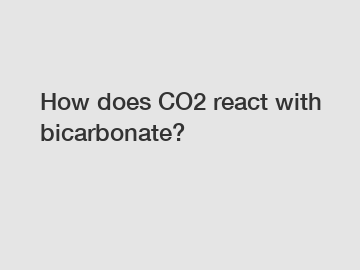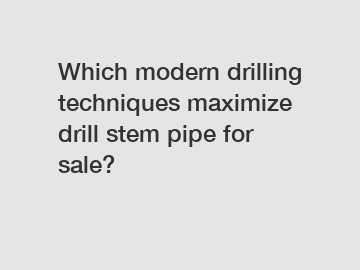The Ultimate Guide to Columnar Activated Carbon
Columnar activated carbon is a fascinating material that has been widely used in various industries for decades. Its unique properties and versatility make it an essential component in many processes, from air purification to water treatment and gas separation. In this ultimate guide, we will dive deep into the world of columnar activated carbon, exploring its composition, production methods, applications, and much more. So, let's get started!
At its core, columnar activated carbon is a highly porous substance that is derived from carbonaceous materials, such as coal, coconut shells, and wood. What sets it apart from other forms of activated carbon is its distinctive columnar shape, which allows for improved flow dynamics during application processes. This form factor, coupled with its high surface area, makes columnar activated carbon a highly effective adsorbent.
The production of columnar activated carbon involves several key steps. First, the raw material is subjected to a carbonization process, during which volatile components are removed, leaving behind a carbon-rich product. Next, the carbonized material undergoes activation, where the resulting substance is exposed to high temperatures and various chemical agents, such as steam or carbon dioxide. This activation process creates the intricate network of pores within the carbon structure, greatly enhancing its adsorption capacity.

The properties of columnar activated carbon can vary depending on factors like the raw material used and the activation process employed. However, there are some key characteristics that are generally associated with this type of carbon. Chief among them is its high surface area, often ranging from a few hundred to several thousand square meters per gram. This vast surface area provides an ample playground for adsorption, making columnar activated carbon an excellent choice for contaminants removal.
Columnar activated carbon finds applications across a wide range of industries. In air purification, it is used in HVAC systems to remove volatile organic compounds (VOCs) and other airborne pollutants. This helps in ensuring cleaner and healthier air in commercial and residential buildings. Similarly, in water treatment, columnar activated carbon is employed to remove impurities, including chlorine, organic chemicals, and heavy metals, ensuring the safety and quality of drinking water.
Another notable application is in gas separation processes, where columnar activated carbon is used to selectively adsorb certain gases, allowing for the extraction of desired components. For instance, in the natural gas industry, it helps separate methane from other gases, resulting in a more refined end product. This ability to tune the adsorption properties of columnar activated carbon makes it invaluable in various gas separation processes.
Additional reading:PVD Gold Dividers: How to Choose the Best Quality for a Premium Purchase?
Which Carbide Conical Buttons Bits for Rock Drill is the Ultimate Game-Changer?
Unveiling the Perks of Nichrome Wire Mesh
Revolutionizing Manufacturing: How Are Ceramic Foam Filters Transforming Industries?
What are the benefits of bullet proof glass?
What are the top 5 advantages of using 2mm Graphite Block for Mould in the purchase stage?
What are the advantages of ordering prefabricated warehouses?
Beyond industrial applications, columnar activated carbon also plays a role in environmental remediation. Its use in soil and groundwater remediation projects helps remove contaminants, providing a sustainable solution for cleaning up polluted sites. Furthermore, columnar activated carbon is a crucial component in many automotive emissions control systems, where it helps capture harmful pollutants, reducing their impact on air quality.
In recent years, there have been significant advancements in the production and utilization of columnar activated carbon. Researchers are exploring innovative methods to improve its adsorption efficiency and develop tailored materials for specific applications. For instance, surface modification techniques are being employed to enhance its affinity for certain contaminants, making it even more effective in targeted adsorption.
Furthermore, the integration of columnar activated carbon with other materials is opening up new possibilities in hybrid adsorbents. By combining its adsorption capabilities with other materials' synergistic properties, such as catalytic or magnetic properties, researchers are creating multifunctional materials with enhanced performance. These advancements hold great promise for future applications in areas like energy storage, waste management, and beyond.
To ensure the best performance and longevity of columnar activated carbon, proper handling and maintenance are essential. Regular regeneration and replacement of exhausted carbon are crucial to maintain its efficiency. Additionally, optimizing process parameters, such as flow rate and contact time, can help maximize adsorption capacity and minimize operational costs.
In conclusion, columnar activated carbon is a powerful adsorbent that finds diverse applications across numerous industries. Its unique structure and high surface area make it an excellent choice for various purification and separation processes. With ongoing research and advancements, we can expect columnar activated carbon to continue playing a vital role in tackling challenges related to air and water quality, environmental remediation, and beyond. So, next time you enjoy clean air or drink pure water, remember the silent hero behind the scenes – columnar activated carbon!
For more Gpc Columnar Recarburizer, Metallurgical coke carburizing agent, Coal Carburizer Graphite Petroleuminformation, please contact us. We will provide professional answers.
Additional reading:Unveiling the Beauty: Olive Railing Inspires Elegance
Why Graphite is the Best Electrode Material
How long does used oilfield pipe last?
The Essential Guide to Copper Alloys: Exploring
Which innovative uses of Neodymium Block Magnet 2x2x1 are revolutionizing industries?
Why are carbide drill bits so expensive?
What is the difference between wire mesh and expanded metal?
156
0
0
Related Articles
-
60
0
0
-
74
0
0
-
114
0
0
-
56
0
0
-
Which Innovative Designs of Checkered Steel Plate are Revolutionizing Industrial Safety?
Which Innovative Designs of Checkered Steel Plate are Revolutionizing Industrial Safety?
94
0
0
-
68
0
0
-
68
0
0
-
Which modern drilling techniques maximize drill stem pipe for sale?
Which modern drilling techniques maximize drill stem pipe for sale?
72
0
0










Comments
All Comments (0)